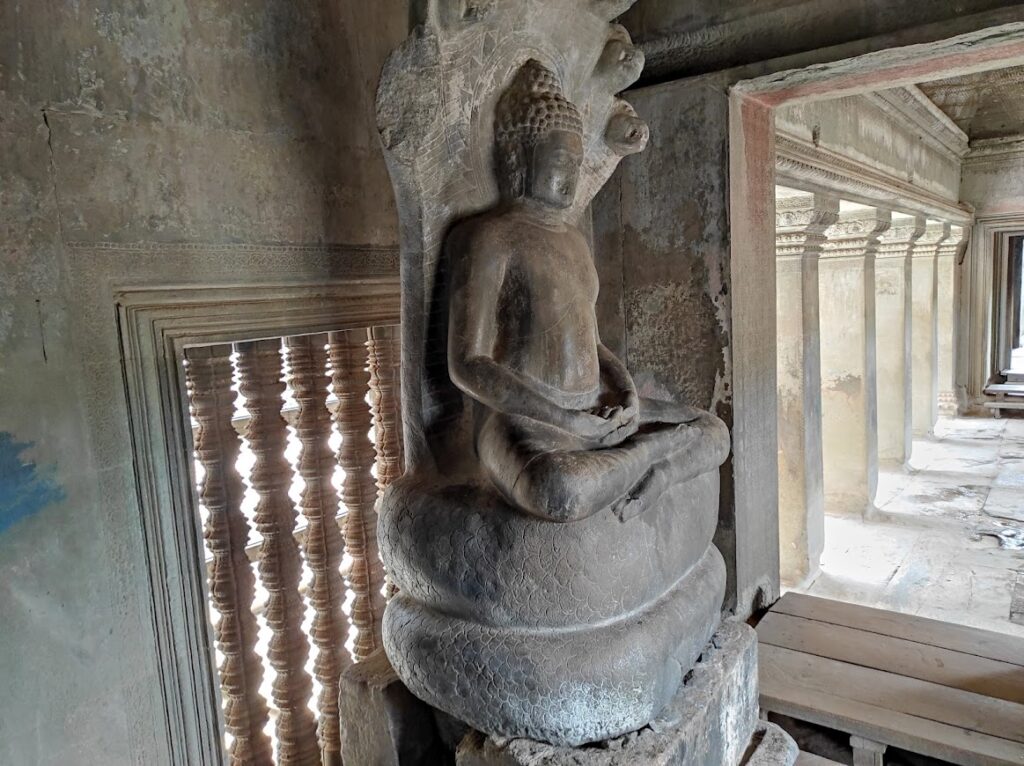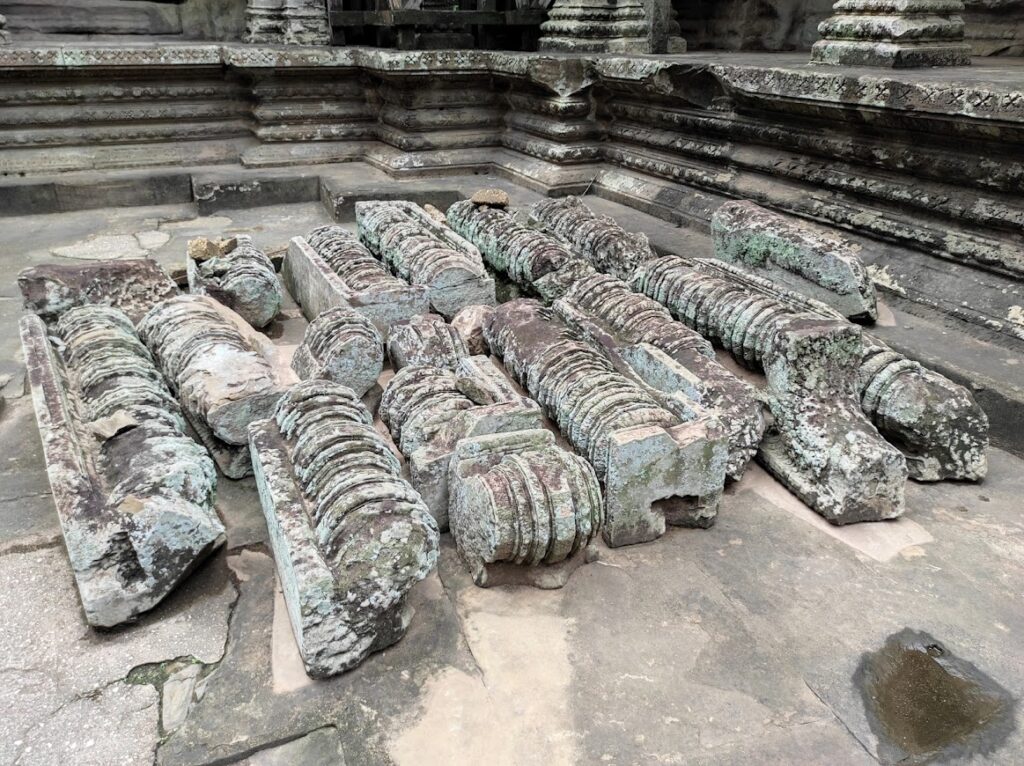Here is a question that has conjured all kinds of theories! Angkor Wat, the great temple of ancient Angkor remains one of the most researched temples in Cambodia but also one of the most mysterious. Still to this day, some believe it was built by giants, some still point to the ancient belief that was built overnight by the god Indra, and even modern mystic theorists, such as the popular Praveen Mohan, point to many features of Angkor Wat including an ancient energy machine that lies below the center of the temple!
So, is there a hidden chamber beneath Angkor Wat’s central shrine?
Let’s look at the layout where we can see the temple rising up level by level to the central shrine known as the Bakan and we can explore this area ourselves. On the second level, you can walk around the perimeter of the Bakan that rises up with a tapered platform base topped by a galleried enclosure and a quincunx of towers.
In the cutaway image below, from left to right (or west to east), the entry gopura and outer gallery (1), Preah Poan (2), second-level and galleried enclosure (3), then the third level or Bakan (4) with its large central tower and smaller tower at each corner. You can see the massive volume of space that lies beneath.

Extensive research has concluded that the base of Angkor Wat was built on ground leveled with sand and clay. Laterite was then used to create the pyramid-like base structure which was filled with sand. This was then capped with sandstone from which the structures rose. Researchers also point to the amazing architectural feat that even with its massive weight in stone, in the thousands of tons, that the temple has remained stable. Some researchers point to the importance of the water table and the massive outer moat. With water being difficult to compress, the water table and moat possibly play a pivotal role in offering structural support to the entire complex.
So, about that secret chamber beneath Angkor Wat?
It’s a tradition with Khmer temples to place a consecration deposit at the center of the main sanctuary, usually beneath the temple’s deity or pedestal as the top deposit and maybe lower deposits in a well beneath. Sometimes “deposit stones” were used that featured carved symbolic references emplaced with gemstones, gold leaf etc. Some examples of deposit stones and central wells

Damrei Krap Temple (photo EFEO) 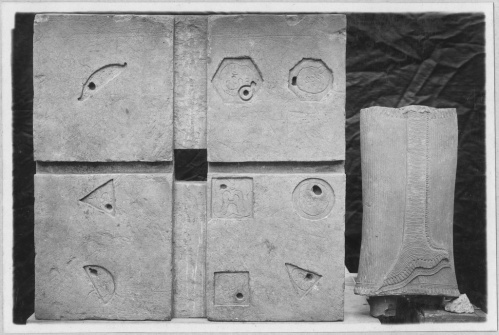
Snoul Temple (photo EFEO)
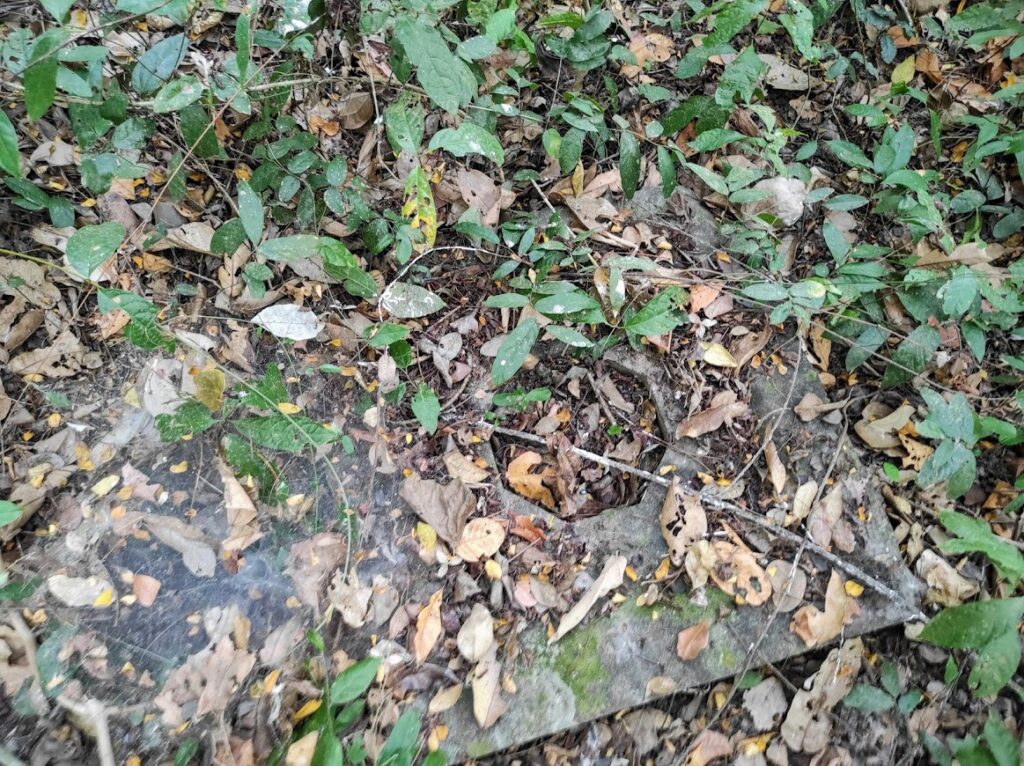
Deposit stone 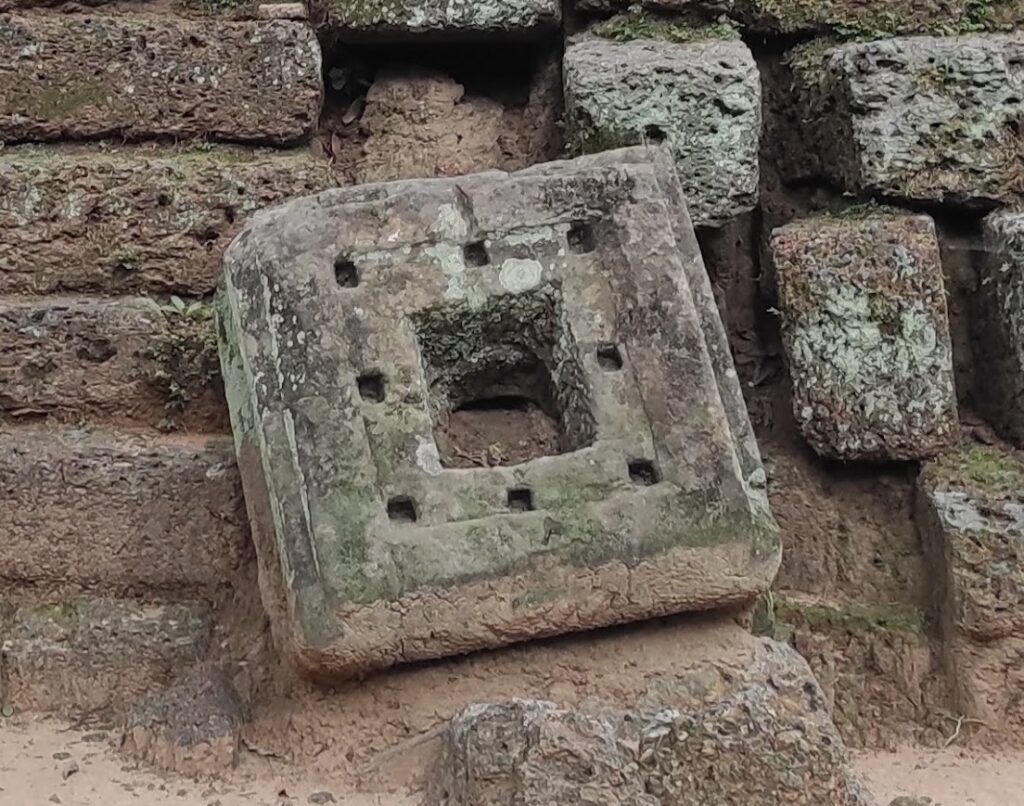
Deposit stone 
Deposit well (Chamreing Temple) 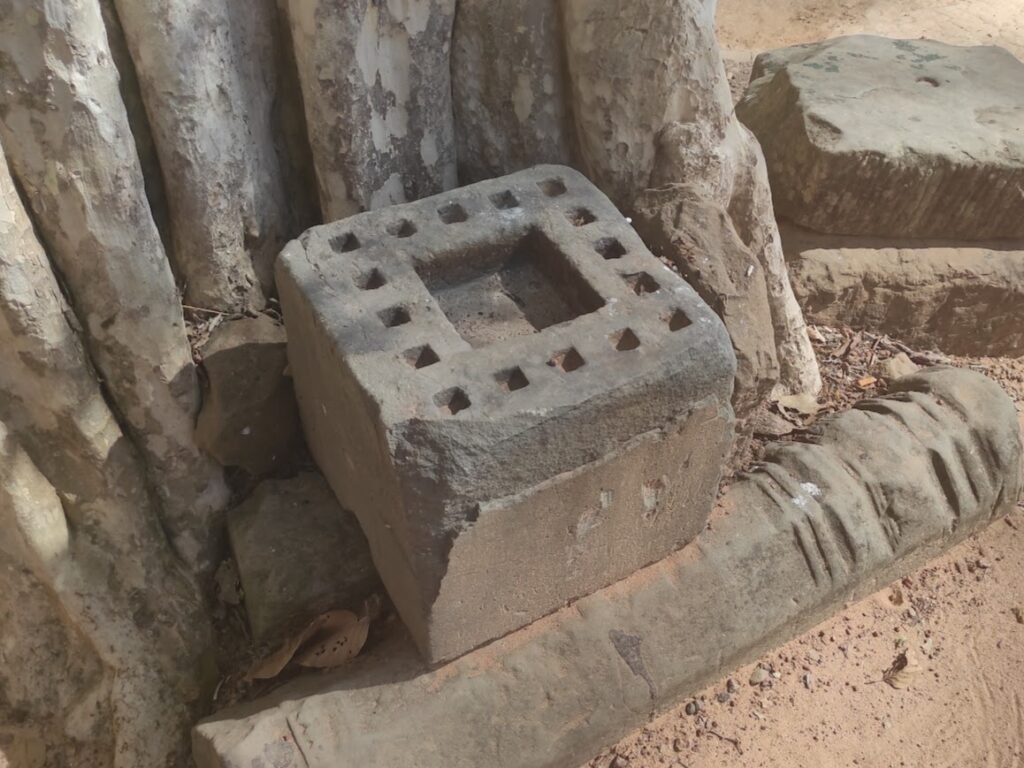
Deposit stone 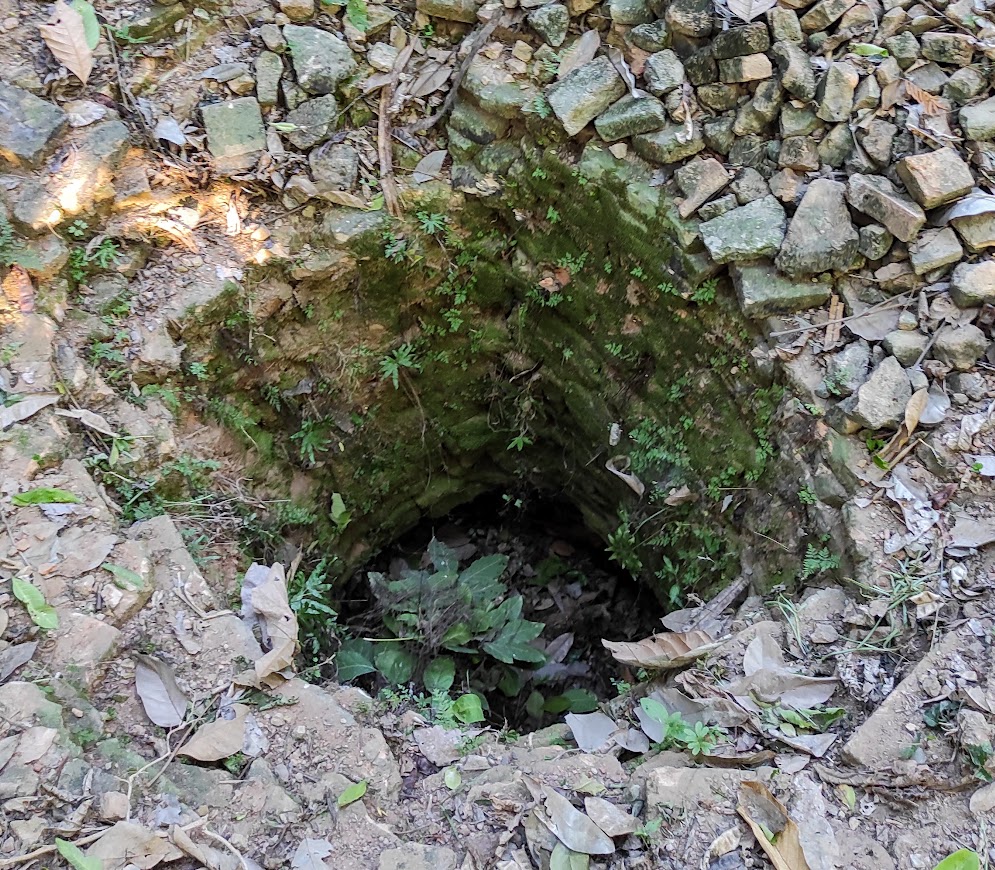
Deposit well (Trapeang Phong temple) 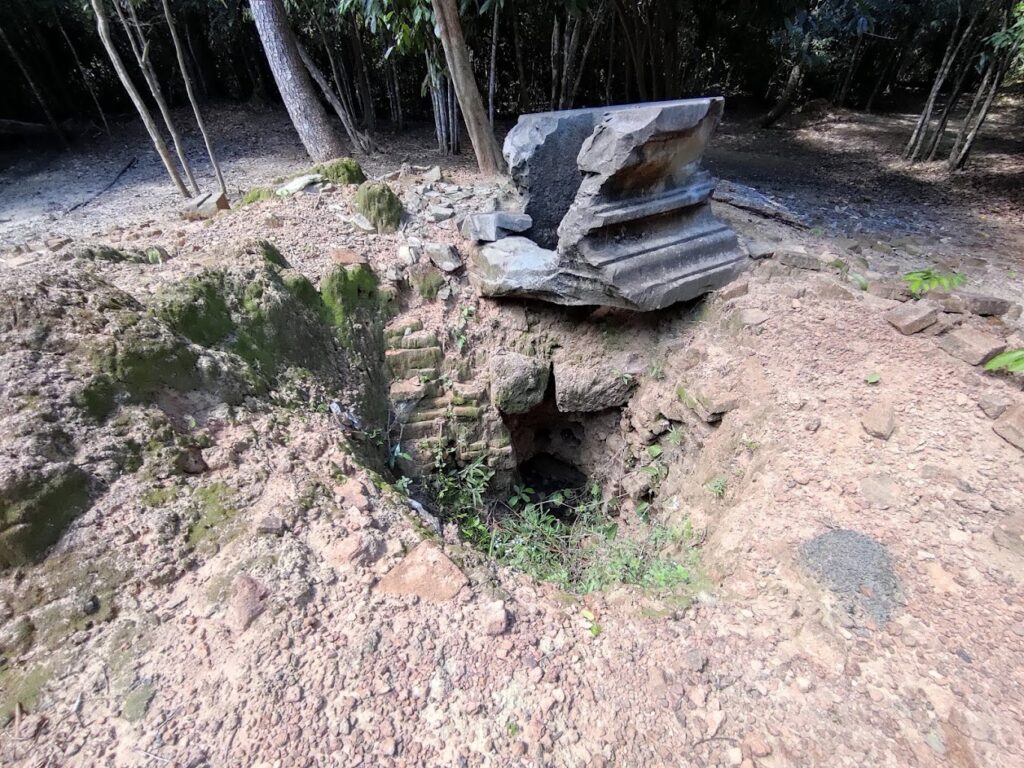
Deposit well (Kulen Mountain)
Let’s not forget Angkor Wat was also possibly a tomb for its creator, King Suryavarman II. Funeral practices of the Khmer are a deep topic for another day but let’s look at a few visible examples of sarcophaguses seen around Angkor. The most prominent is the example at Banteay Samre but actually, you don’t need to go far to find many more
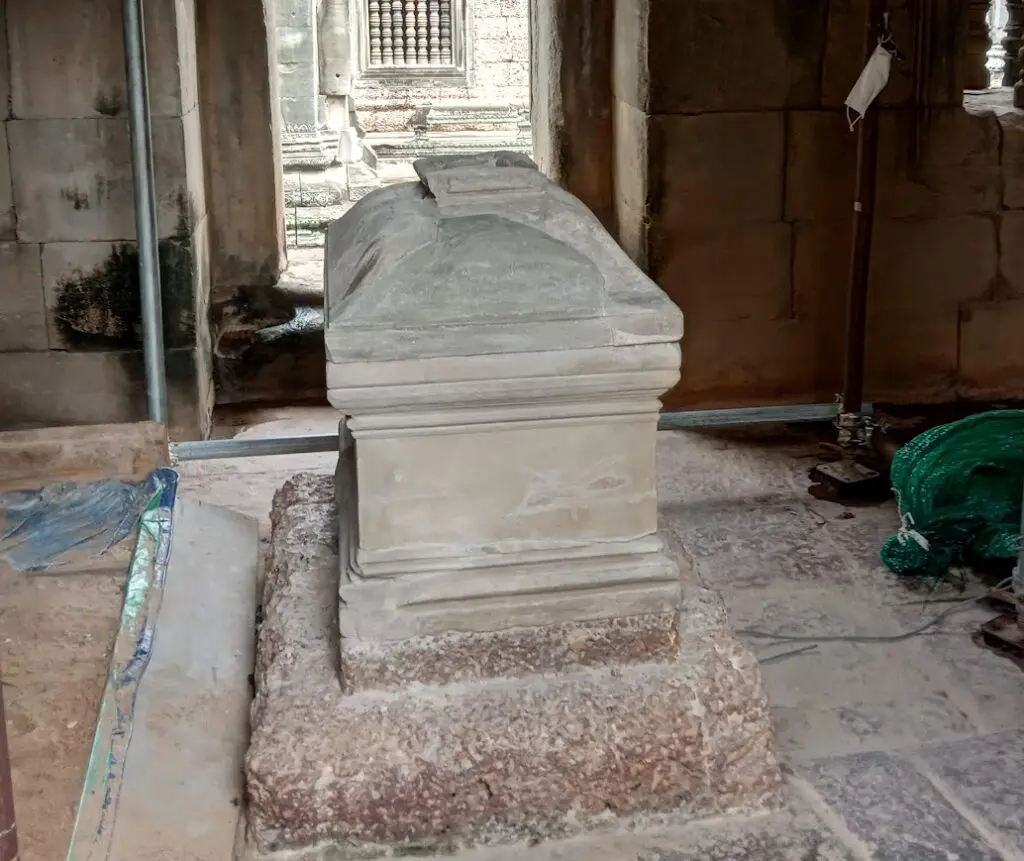
Banteay Samre sarcophagus 
Sarcophagus at Preah Ngok 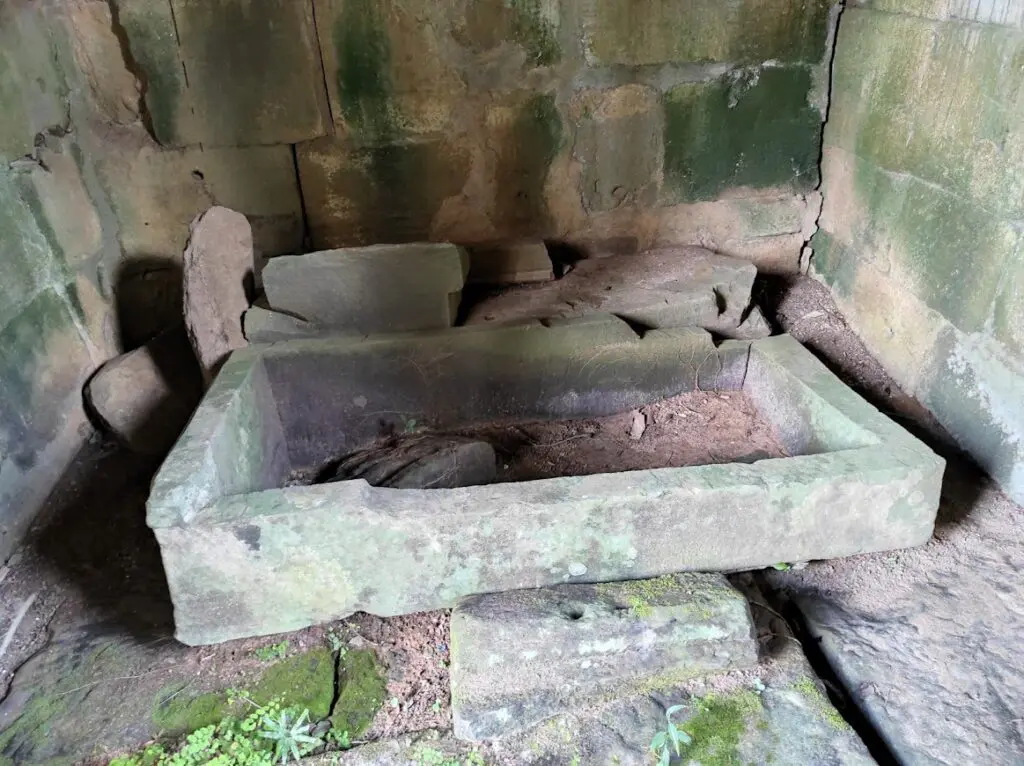
Sarcophagus at Preah Khan
So, now we know what we are looking for, and, of course, thanks to Praveen, we also need to find an energy device. Surely someone in the last 100 years has already done so right?
It appears no one went looking for the ancient energy device, but, French and Khmer Archeologists did in fact open the chamber beneath the central tower of Angkor Wat back in the early 1900s.

Jean Commaille had opened the southern chamber door shortly prior, in July 1934, after chasing out all the bats that occupied the tower, Henri Marchal (Conservator of Angkor at the time, perhaps together with Georges Trouve who later become conservator) cleared numerous fragments of sculpted and non-sculpted stonework and located a large seated Buddha on Naga statue (Buddha Muchalinda), then finding a well set into the laterite foundation of the temple measuring around 85 cm deep and 1.4m wide. Note: that Buddha Muchalinda statue can still be found on the third level in the outer gallery along with other remnants. Also the column fragments and parts of a naga balustrade removed from the central chamber.
This central well contained fragments of stone masonry, as they note, likely remnants from the columns that surrounded the doorway. We need to backtrack just a little bit at this point. Centuries earlier, possibly around the 16th century on the temporary return to Angkor under King Ang Chan, the central chamber was altered, having the doorways closed with stone masonry and carved with large standing Buddhas. So, the entry by Marchal is most certainly not the first after the end of King Suryavarman II’s time. More on the history of Angkor Wat here. Let’s go on.
Marchal apparently raised some of the laterite to find layers of sand, silica, crushed stone, and earth. They continued excavation works in a series of stages from August 1934 to February 1935. At around 13.4 m deep they struck a laterite block, continuing to 16 m down they struck the underground water table. Around 20 m deep work was almost abandoned for the volume of water coming in and landslides of sand filling the excavated well.
They continued, running two shifts, day and night, through repressive heat and conditions finally making it to 22 m deep. Then they struck laterite again. They cut and removed that laterite block, then another, working through the night.
By 6 AM, on cleaning that second laterite block they discovered a circular cut in the laterite. They had just found the foundation deposit of Angkor Wat for inside the circular cutaway were crystal and gold leaf.
The two pieces of gold leaf measured 18 cm in diameter, weighing 65 grams, and as Marchal notes
The circular gold leaves were at the bottom of a cylindrical cavity of 0.23 m in diameter over 0.12 m deep. The void was filled with very fine sand in which there were the two pieces of crystal. Under the lower gold leaf, the bottom was formed by finely crushed laterite.
They continued past 23 m deep (ground level) and at 25 m encountered clay, they used probes to go as deep as 27.5 m revealing nothing more.
Drawings of the archeological excavation of Angkor Wat, 1934

They did not find the tomb of King Suryavarman II or at least did not mention it, perhaps it had been relocated earlier if it did in fact ever exist there.
Searching through historical images of Angkor Wat, here is what looks like a sarcophagus described as “1st floor, central tower, tank with cavities for foundation deposits” (IMG ID: EFEO_CAM05724). Did they number the floors in reverse? Perhaps there are some notes about it hiding in old French documents somewhere. So for now, like much of Angkor, it’s another little mystery.
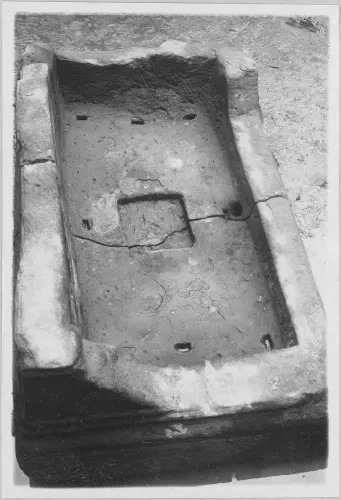
More on Angkor Wat
- Complete guide to Angkor Wat inc. Faqs and History
- The Bakan of Angkor Wat
- Preah Poan – the Hall of a Thousand Buddhas
- The Bas-relief Galleries
- The outer gopura of Angkor Wat
- List and location of Inscriptions at Angkor Wat
- An Ancient Japanese Map is a Time Portal to Angkor Wat in the 17th Century
References, B/W Images, and Archeological Drawings
- Chronique de l’année 1935. In: Bulletin de l’Ecole française d’Extrême-Orient. Tome 35, 1935. pp. 407-505; doi : https://doi.org/10.3406/befeo.1935.3977 https://www.persee.fr/doc/befeo_0336-1519_1935_num_35_1_3977
- EFEO Fonds Cambodge



